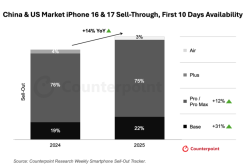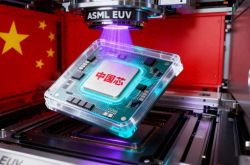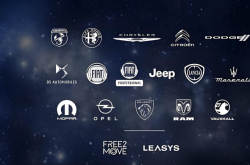The "Growth Generation Gap" in China's Humanoid Robot Industry
![]() 03/10 2025
03/10 2025
![]() 474
474
Author | Smart Relativism
Amidst the fervent discussions surrounding humanoid robots, the prestigious investment bank Goldman Sachs released a report on Unitree Robotics, bluntly stating that while its "hardware performance is robust, it is not yet ready for functional tasks." This report immediately sent the market value of A-share humanoid robot stocks tumbling.
Just as market sentiment hit an all-time low, another renowned investment bank, Citibank, raised the target price of "the first stock of humanoid robots," UBTECH, to HK$142 and included it in the Pan-Asian Market Focus List. Citibank noted that while investors remain cautious about the theme of Chinese humanoid robots, they favor individual stocks like UBTECH due to its shareholder background and collaborations with leading Chinese new energy automakers like BYD, which could propel the success of its humanoid robot business. This outlook has contributed to a steady rise in UBTECH's share price.
Why do internationally renowned investment banks hold contrasting views on Chinese humanoid robots?
In fact, the rapidly evolving Chinese humanoid robot industry exhibits a "growth generation gap." Unitree Robotics' humanoid robots have garnered a "web celebrity" status, quickly becoming popular on social media. In contrast, UBTECH's humanoid robots are grounded in application scenarios, quietly establishing themselves as pragmatic players in the field of intelligent manufacturing.
In this year's government work report, Premier Li Qiang also proposed developing new types of productivity based on local conditions and accelerating the construction of a modern industrial system. Notably, he mentioned establishing an investment growth mechanism for future industries such as embodied intelligence and vigorously promoting new-generation intelligent terminals like intelligent robots and manufacturing equipment.
Driven by these favorable official policies, the humanoid robot industry has witnessed a surge of enthusiasm in China. Due to variations in technological advantages, regional industrial foundations, and brand development philosophies, each enterprise displays distinct development states and growth priorities.
The "Growth Generation Gap" in Humanoid Robots
Currently, most of the humanoid robot videos posted by Hangzhou-based Unitree Robotics on various social media platforms focus on dance moves, walking, kicking, somersaults, and other impressive tricks. Such performances are characteristic of the initial stage of humanoid robot research and development, where companies attract attention through skill demonstrations, and visually appealing content resonates easily with the public. This could be one of the key reasons for Unitree's humanoid robots' popularity.
However, in Shenzhen, humanoid robots have evolved to a more mature stage of industrial application. Shenzhen's humanoid robot enterprises, such as UBTECH, emphasize large-scale scenario service capabilities, focusing on rapidly deploying humanoid robots to workplaces to learn complex scenario operations akin to "apprentices."
Recently, dozens of UBTECH humanoid robots officially entered the Geely Zeekr 5G Smart Factory to undertake collaborative practical training. From the general assembly workshop to the SPS instrument area, quality inspection area, door assembly area, and other complex industrial scenarios, humanoid robots are present, performing multi-task collaborative operations such as collaborative sorting, handling, and precision assembly.
Observing the global market, industrial scenarios have emerged as the primary battleground for leading humanoid robot companies. In addition to UBTECH, the two prominent American humanoid robot companies, Tesla and Figure, are also actively showcasing their humanoid robots' ability to work independently. For instance, Tesla previously released a video of its humanoid robot sorting batteries in a factory, while Figure recently unveiled a video of its humanoid robot entering a logistics factory to work.
Thus, both China and the United States have positioned the real application of industrial scenarios as a crucial direction for the development of humanoid robots. UBTECH, Tesla, and Figure have gradually become the top three in humanoid robot applications. Among them, Tesla mainly conducts internal factory testing, Figure operates in BMW factories, and UBTECH, leveraging China's rich intelligent manufacturing industrial scenarios, conducts practical training of humanoid robots in multiple automobile manufacturing factories, 3C, logistics, and other scenarios. It boasts the widest scenario coverage and the most practical training experience among the top three.
The ability to swiftly create more industrial value has always been the criterion for the capital market to evaluate an emerging technology.
How Humanoid Robots Gradually Enter Factories
In fact, delving into the practical development of the entire industry, as the country vigorously advocates the development of new types of productivity, the creation of "productivity" for real industrial scenarios remains the focal point of the entire humanoid robot industry at this stage.
Recently, the Shenzhen Science and Technology Innovation Bureau issued the "Shenzhen Embodied Intelligent Robot Technology Innovation and Industrial Development Action Plan (2025-2027)," clearly stating that it aims to achieve the deployment of over 50 billion-worth application scenarios and a related industrial scale exceeding RMB 100 billion. The comprehensive strength of the embodied intelligent robot industry should reach an internationally leading level. Concurrently, relevant favorable policies have been successively introduced in cities like Beijing and Hangzhou.
This internal driving force stemming from top-level design has long existed and continues to guide the pragmatic development of local industries. Specifically, the reason why Shenzhen enterprises represented by BYD, Foxconn, Huawei, Tencent, etc., remain at the forefront of cutting-edge technology industries is inseparable from the internal drive of top-level design.
Similarly, UBTECH, with its Shenzhen roots, also demonstrates the same technological innovation capabilities and scenario service awareness in the field of humanoid robots. Currently, UBTECH is one of the very few companies globally with full-stack technological capabilities for humanoid robots. It is also the only humanoid robot company globally that has announced cooperation with multiple automakers. The Walker S series has become the industrial humanoid robot that has entered the most automaker factories for practical training worldwide.
Looking back at UBTECH's journey of humanoid robots entering factories, it is also a process of continuous iterative evolution.
In 2023, UBTECH began exploring the application of humanoid robots in industrial scenarios. The industrial version of the humanoid robot Walker S, released the same year, made its debut by ringing the bell to list with the company's founder Zhou Jian. This marked the first time in human history that a humanoid robot rang the bell at a listing ceremony.
After ringing the bell, Walker S began "working" in factories, successively entering NIO, Dongfeng Liuzhou Automobile, Geely Zeekr, FAW-Volkswagen Qingdao Branch, Audi FAW, BYD, BAIC BJEV, Lynk & Co, and Foxconn for scenario practical training.
With the accumulation of practical training in real scenarios in the initial stage, the application and learning of humanoid robots in handling, quality inspection, and other types of work have continued to progress. Simultaneously, their collaborative interaction capabilities with equipment, personnel, and the environment have also been consistently enhanced.
This year, UBTECH launched Practical Training 2.0, with dozens of humanoid robots conducting collaborative practical training in the Geely Zeekr 5G Smart Factory. For the first time, swarm intelligence technology was introduced into humanoid robots, breaking through the limitation of single humanoid robots to expand the task scope to the flexible needs of multiple robots collaborating to complete production line-level tasks. This laid a solid foundation for the efficient collaboration of humanoid robots in complex industrial environments and officially initiated the advanced evolution of embodied intelligence and intelligent manufacturing.
Throughout its journey, the evolution of UBTECH's humanoid robots closely mirrors the way humans enter the workplace: from handling one or two workstation tasks to managing multiple workstation operations; from handling and quality inspection to more intricate sorting, assembly, inspection, maintenance, and other processes; from single-body operations to swarm collaboration; the brain becomes smarter with the upgrading of large model technology, and movements become smoother with the accumulation of practical training experience...
Looking back, such achievements are far from accidental. As a benchmark city for China's manufacturing industry, Shenzhen, with its comprehensive industrial chain, innovative ecosystem, and policy support, continues to spearhead the global industrial upgrading wave – from Huawei's communication technology to BYD's new energy vehicles to Foxconn's precision manufacturing, Shenzhen enterprises have always been at the forefront of technological change.
Today, "the first stock of humanoid robots," UBTECH, is the first globally to attempt using swarm intelligence technology for humanoid robots to perform industrial-level tasks across entire production lines. It has also announced a series of breakthrough technological advancements, such as the "Swarm Brain Network" technical architecture and a multi-modal reasoning large model for humanoid robots. This represents the forward-thinking exploration and practice of cutting-edge technologies by UBTECH, imbued with the innovation genes of Shenzhen.
Looking ahead, when humanoid robots are seamlessly integrated into production lines and collaborate with humans to enhance productivity, that will be the epitome of their evolution's value.
*All images in this article are sourced from the internet








